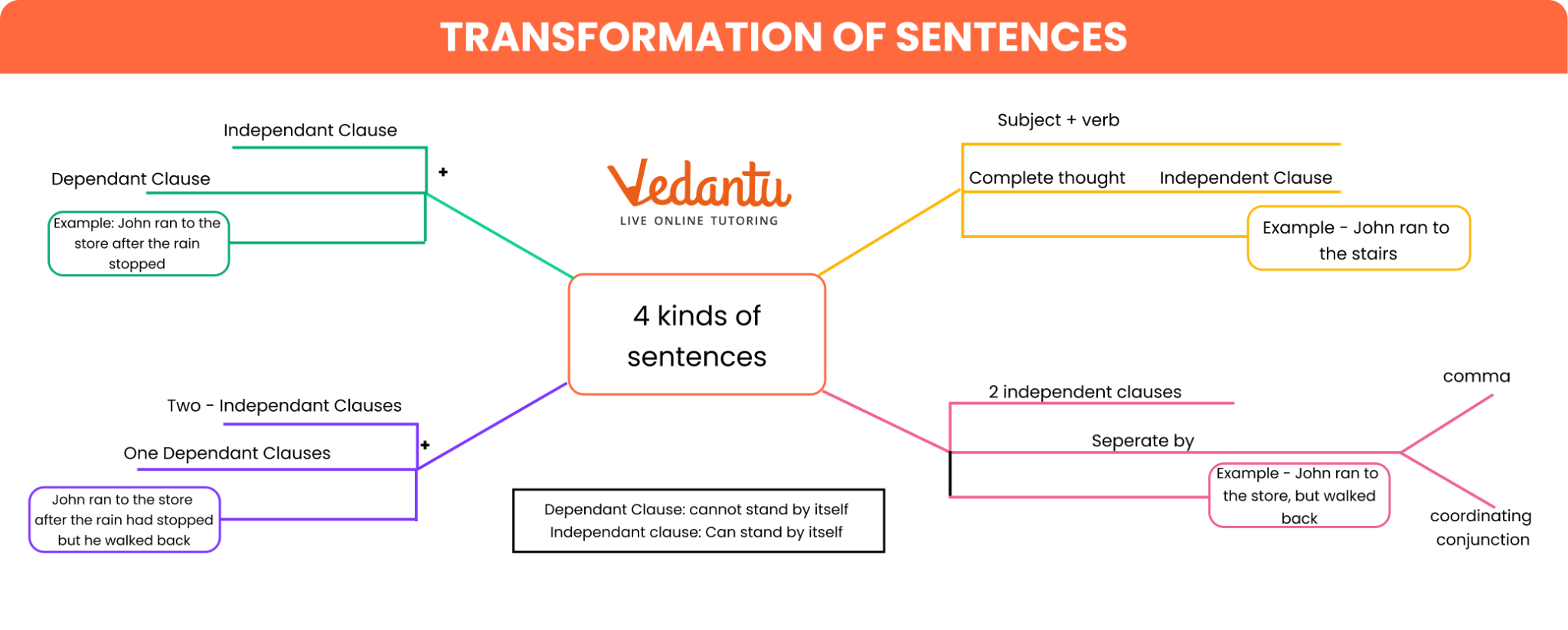




Simple Compound and Complex Sentences Transformation Exercises
FAQs on Transforming Simple, Compound, and Complex Sentences
1. What are transformation of sentences simple, compound, complex exercises with answers?
These exercises involve changing a sentence from one type (simple, compound, or complex) to another while providing answers for students to check their understanding and correctness.
2. How can I practice transformation of sentences simple, compound, complex exercises?
You can practice by transforming sentences from simple to compound, compound to complex, and vice versa. Exercises often come with answers to help you verify your work.
3. What is the purpose of transformation of sentences simple compound complex exercises?
The purpose is to enhance your understanding of sentence structures by practicing how to change one form of a sentence into another, improving your writing skills and grammatical knowledge.
4. Can you provide examples of simple compound and complex sentences transformation exercises?
Yes, an example exercise could be transforming a simple sentence like "She sings beautifully" into a compound sentence, such as "She sings beautifully, and she dances gracefully."
5. What should I focus on when doing simple compound and complex sentences transformation exercises?
Focus on identifying the type of sentence you are starting with, understanding the rules for transformation, and ensuring the meaning of the sentence remains the same after transformation.
6. Are there specific rules for transformation of sentences simple, compound, complex exercises with answers?
Yes, each transformation follows grammatical rules, such as using coordinating conjunctions for compound sentences or subordinating conjunctions for complex sentences. Answers help confirm if you've applied the rules correctly.
7. How do simple compound and complex sentences transformation exercises benefit students?
These exercises help students improve their writing skills by teaching them how to vary sentence structures, making their writing more engaging and effective.
8. Can transformation of sentences simple compound complex exercises be used for exam preparation?
Yes, these exercises are useful for exam preparation as they often appear in tests, helping students become more adept at recognizing and transforming different sentence types.
9. Where can I find transformation of sentences simple, compound, complex exercises with answers?
These exercises are commonly found in grammar textbooks, educational websites, and practice worksheets that focus on sentence structure and grammar.
10. Why are simple compound and complex sentences transformation exercises important for language learning?
They are important because they teach students how to manipulate sentence structures to express ideas more clearly and effectively, which is a crucial skill in both writing and communication.























